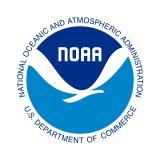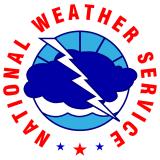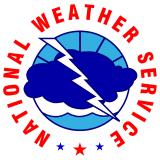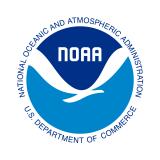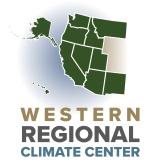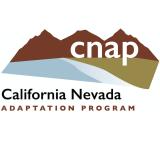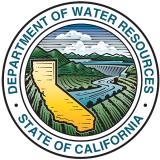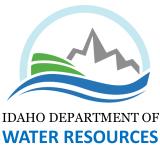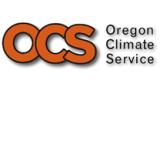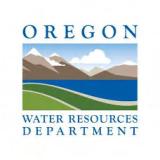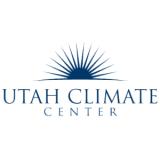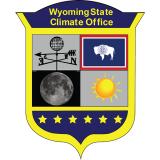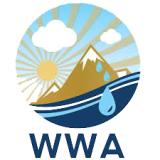Spring Heat Wave Rapidly Melts Snow Across the West
Key Points
- Unusual rapid snowmelt occurred at higher elevations across the West due to a spring heat wave. Rapid melt can intensify drought conditions and alter spring water supply forecasts.
- Record-breaking snowmelt occurred in every Western state except Alaska due to above-normal temperatures, with some stations melting 5-7 inches of snow water equivalent (SWE). Subsequent rapid runoff caused flooding.
- Despite some storms in March across southern Colorado, New Mexico, Arizona, Utah, and southeastern Nevada, deep seasonal snow deficits remain.
- Lower-elevation snow drought persists across southern Alaska, with complete snowmelt occurring at some stations over a month before median peak snow water equivalent (SWE) typically is expected.
- Snow drought concerns remain in the northern Cascade Range of Washington. The Cascade Range experienced a substantial snowmelt event in late March, elevating water supply concerns for this region.
- The National Weather Service Climate Prediction Center’s outlooks favor a much warmer and drier pattern over the next two weeks across the West, which could further accelerate snowmelt.
Snow Telemetry (SNOTEL) snow water equivalent (SWE) values for watersheds in the western U.S. as a percentage of the 1991–2020 median recorded by the USDA Natural Resources Conservation Service (NRCS). Only stations with at least 20 years of data are included in the station averages.
The SWE percent of median, in this figure and in the text, represents the current SWE at selected SNOTEL stations in or near the basin compared to the median value for those stations on the same date from 1991–2020. This map is valid through the end of the day March 30, 2025.
For an interactive version of this map, please visit NRCS.
Snow Telemetry (SNOTEL) and snow course snow water equivalent (SWE) values for watersheds in Alaska as a percentage of the 1991–2020 median recorded by the USDA Natural Resources Conservation Service (NRCS). Only stations with at least 20 years of data are included in the station averages.
The SWE percentage of median, in this figure and in the text, represents the current SWE at selected SNOTEL stations in or near the basin compared to the median value for those stations on the same date. This map is valid through the end of the day March 30, 2025.
For an interactive version of this map, please visit NRCS.
Drought is defined as the lack of precipitation over an extended period of time, usually for a season or more, that results in a water shortage. Changes in precipitation can substantially disrupt crops and livestock, influence the frequency and intensity of severe weather events, and affect the quality and quantity of water available for municipal and industrial use.
Learn MoreSnow drought is a period of abnormally low snowpack for the time of year. Snowpack typically acts as a natural reservoir, providing water throughout the drier summer months. Lack of snowpack storage, or a shift in timing of snowmelt, can be a challenge for drought planning.
Learn MorePeriods of drought can lead to inadequate water supply, threatening the health, safety, and welfare of communities. Streamflow, groundwater, reservoir, and snowpack data are key to monitoring and forecasting water supply.
Learn MoreIn a drought, lower water levels or snowpack can affect the availability of recreational activities and associated tourism, and a resulting loss of revenue can severely impact supply chains and the economy. Drought—as well as negative perceptions of drought, fire bans, or wildfires—may also result in decreased visitations, cancellations in hotel stays, a reduction in booked holidays, or reduced merchandise sales.
Learn MoreDrought is defined as the lack of precipitation over an extended period of time, usually for a season or more, that results in a water shortage. Changes in precipitation can substantially disrupt crops and livestock, influence the frequency and intensity of severe weather events, and affect the quality and quantity of water available for municipal and industrial use.
Learn MoreSnow drought is a period of abnormally low snowpack for the time of year. Snowpack typically acts as a natural reservoir, providing water throughout the drier summer months. Lack of snowpack storage, or a shift in timing of snowmelt, can be a challenge for drought planning.
Learn MorePeriods of drought can lead to inadequate water supply, threatening the health, safety, and welfare of communities. Streamflow, groundwater, reservoir, and snowpack data are key to monitoring and forecasting water supply.
Learn MoreIn a drought, lower water levels or snowpack can affect the availability of recreational activities and associated tourism, and a resulting loss of revenue can severely impact supply chains and the economy. Drought—as well as negative perceptions of drought, fire bans, or wildfires—may also result in decreased visitations, cancellations in hotel stays, a reduction in booked holidays, or reduced merchandise sales.
Learn MorePercent of Median Snow Water Equivalent
< 50% of Median
Current snow water equivalent (SWE) is less than 50% of the median SWE value for this day of the year, compared to historical conditions from 1991–2020.
50%–70% of Median
Current snow water equivalent (SWE) is between 50%–70% of the median SWE value for this day of the year, compared to historical conditions from 1991–2020.
70%–90% of Median
Current snow water equivalent (SWE) is between 70%–90% of the median SWE value for this day of the year, compared to historical conditions from 1991–2020.
90%–110% of Median
Current snow water equivalent (SWE) is between 90%–110% of the median SWE value for this day of the year, compared to historical conditions from 1991–2020.
110%–130% of Median
Current snow water equivalent (SWE) is between 110%–130% of the median SWE value for this day of the year, compared to historical conditions from 1991–2020.
130%–150% of Median
Current snow water equivalent (SWE) is between 130%–150% of the median SWE value for this day of the year, compared to historical conditions from 1991–2020.
>150% of Median
Current snow water equivalent (SWE) is greater than 150% of the median SWE value for this day of the year, compared to historical conditions from 1991–2020.
Percent of Median Snow Water Equivalent
< 50% of Median
Current snow water equivalent (SWE) is less than 50% of the median SWE value for this day of the year, compared to historical conditions from 1991–2020.
50%–70% of Median
Current snow water equivalent (SWE) is between 50%–70% of the median SWE value for this day of the year, compared to historical conditions from 1991–2020.
70%–90% of Median
Current snow water equivalent (SWE) is between 70%–90% of the median SWE value for this day of the year, compared to historical conditions from 1991–2020.
90%–110% of Median
Current snow water equivalent (SWE) is between 90%–110% of the median SWE value for this day of the year, compared to historical conditions from 1991–2020.
110%–130% of Median
Current snow water equivalent (SWE) is between 110%–130% of the median SWE value for this day of the year, compared to historical conditions from 1991–2020.
130%–150% of Median
Current snow water equivalent (SWE) is between 130%–150% of the median SWE value for this day of the year, compared to historical conditions from 1991–2020.
>150% of Median
Current snow water equivalent (SWE) is greater than 150% of the median SWE value for this day of the year, compared to historical conditions from 1991–2020.
Snow Telemetry (SNOTEL) snow water equivalent (SWE) values for watersheds in the western U.S. as a percentage of the 1991–2020 median recorded by the USDA Natural Resources Conservation Service (NRCS). Only stations with at least 20 years of data are included in the station averages.
The SWE percent of median, in this figure and in the text, represents the current SWE at selected SNOTEL stations in or near the basin compared to the median value for those stations on the same date from 1991–2020. This map is valid through the end of the day March 30, 2025.
For an interactive version of this map, please visit NRCS.
Snow Telemetry (SNOTEL) and snow course snow water equivalent (SWE) values for watersheds in Alaska as a percentage of the 1991–2020 median recorded by the USDA Natural Resources Conservation Service (NRCS). Only stations with at least 20 years of data are included in the station averages.
The SWE percentage of median, in this figure and in the text, represents the current SWE at selected SNOTEL stations in or near the basin compared to the median value for those stations on the same date. This map is valid through the end of the day March 30, 2025.
For an interactive version of this map, please visit NRCS.
View an updated, interactive version of this map from the USDA's Natural Resources Conservation Service. You can also view SWE data on Drought.gov.
View an updated, interactive version of this map from the USDA's Natural Resources Conservation Service. You can also view SWE data on Drought.gov.
Drought is defined as the lack of precipitation over an extended period of time, usually for a season or more, that results in a water shortage. Changes in precipitation can substantially disrupt crops and livestock, influence the frequency and intensity of severe weather events, and affect the quality and quantity of water available for municipal and industrial use.
Learn MoreSnow drought is a period of abnormally low snowpack for the time of year. Snowpack typically acts as a natural reservoir, providing water throughout the drier summer months. Lack of snowpack storage, or a shift in timing of snowmelt, can be a challenge for drought planning.
Learn MorePeriods of drought can lead to inadequate water supply, threatening the health, safety, and welfare of communities. Streamflow, groundwater, reservoir, and snowpack data are key to monitoring and forecasting water supply.
Learn MoreIn a drought, lower water levels or snowpack can affect the availability of recreational activities and associated tourism, and a resulting loss of revenue can severely impact supply chains and the economy. Drought—as well as negative perceptions of drought, fire bans, or wildfires—may also result in decreased visitations, cancellations in hotel stays, a reduction in booked holidays, or reduced merchandise sales.
Learn MoreDrought is defined as the lack of precipitation over an extended period of time, usually for a season or more, that results in a water shortage. Changes in precipitation can substantially disrupt crops and livestock, influence the frequency and intensity of severe weather events, and affect the quality and quantity of water available for municipal and industrial use.
Learn MoreSnow drought is a period of abnormally low snowpack for the time of year. Snowpack typically acts as a natural reservoir, providing water throughout the drier summer months. Lack of snowpack storage, or a shift in timing of snowmelt, can be a challenge for drought planning.
Learn MorePeriods of drought can lead to inadequate water supply, threatening the health, safety, and welfare of communities. Streamflow, groundwater, reservoir, and snowpack data are key to monitoring and forecasting water supply.
Learn MoreIn a drought, lower water levels or snowpack can affect the availability of recreational activities and associated tourism, and a resulting loss of revenue can severely impact supply chains and the economy. Drought—as well as negative perceptions of drought, fire bans, or wildfires—may also result in decreased visitations, cancellations in hotel stays, a reduction in booked holidays, or reduced merchandise sales.
Learn MoreSnow Drought Conditions Summary
This update is based on data available as of Monday, March 31, 2025 at 12:00 a.m. PT. We acknowledge that conditions are evolving.
Current Conditions
April 1 snow water equivalent (SWE) is a critical data point for informing seasonal western water supply forecasts. Much of the mid- to high-elevation snowpack in the West peaks around April 1, and SWE on that date is a key index for water supply outlooks. However, water supply forecasts can change substantially depending on spring and early summer weather patterns. SWE across the Southwest, especially Arizona, New Mexico, and the southern portion of the Upper Colorado River Basin, continues to be well below median peak, with snow at some lower-elevation sites completely melting early. The persistence (or melt out) of lower-elevation snow is relevant for assessing how wildfire risk changes with elevation across the West.
Despite average precipitation in March across parts of Arizona and Utah, which was beneficial for both snowpack and ecosystems, not enough snow fell to reverse deep seasonal deficits. Snowpack deficits also persisted in Washington’s central and northern Cascade Range and portions of the east slope of the Rocky Mountains in western Montana.
A spring heat wave during the last week of March impacted all of the West, bringing much-above-normal temperatures and substantial snowmelt. Late March snowmelt is not unusual at lower elevations. However, the SWE losses at higher elevations (especially in Utah and western Colorado) are unusual for this time of year and can play a role in further intensifying drought conditions in the region.
Spring Heat Wave Rapidly Melts Snow
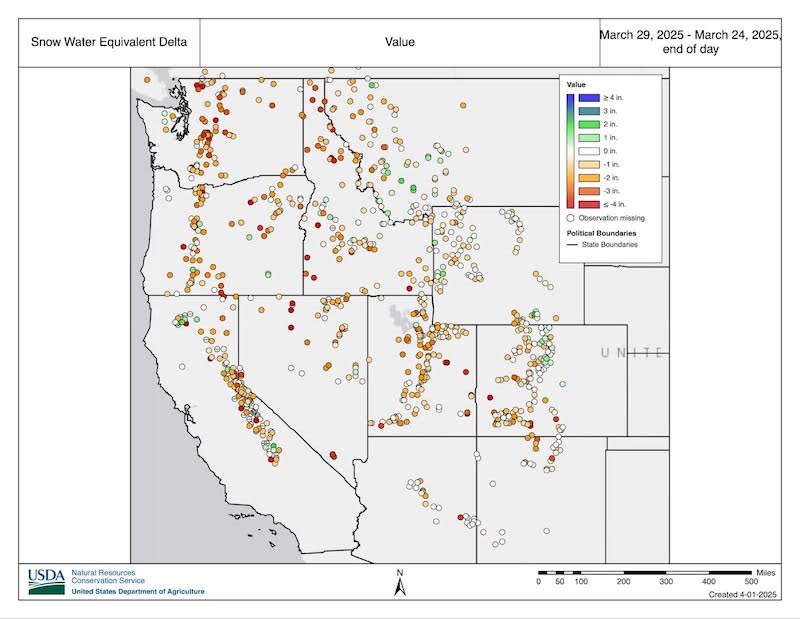
Looking Ahead
As of March 31, a large low pressure area is impacting much of the West, bringing significant snowfall to the Sierra Nevada, Great Basin, and much of the Rocky Mountains. Even the southern Rocky Mountains should receive some much-needed snowfall, but significant seasonal snowpack deficits will remain. The latest outlook from the Climate Prediction Center favors a drying and warming trend during April 10-16.
Ensemble forecasts indicate a return of a strong high pressure system centered over the Four Corners, with temperatures forecasted to be several degrees above normal for an extended time period. The timing of this weather pattern will likely accelerate snowmelt and cause a substantial pulse of runoff across much of the West. This will be particularly impactful for regions with below-normal snowpack, such as much of the Southwest and northern Cascades.
U.S. Bureau of Reclamation forecasts issued on March 17 for April–July (last update) predicted 70% of normal unregulated inflows into Lake Powell. If the forecast is accurate, 2025 will be the second consecutive year with below-normal inflows, resulting in little long-term drought relief for the Lower Colorado Basin. The National Weather Service Northwest River Forecast Center’s April-September water supply forecast predicts below-normal flows for much of northwestern Washington, northern Idaho, and western Montana. Less than 60% of normal runoff is forecast at points in northwestern Washington.
Jump to conditions for your region:
- Colorado, Idaho, Montana, Utah, Wyoming (Rocky Mountains) Snow Conditions
- Arizona and New Mexico Snow Conditions
- Oregon and Washington Snow Conditions
- California and Nevada Snow Conditions
- Alaska Snow Conditions
Rocky Mountain Snow Conditions (Colorado, Idaho, Montana, Utah, Wyoming)
Northern Rockies
Snowpack in the northern Rocky Mountains is generally near-to-above median; however, some isolated areas are experiencing snow drought. Snowpack in the Lewis Range, which runs from the Canadian border to just northwest of Helena in northwestern Montana, has been below median all season. Several SNOTEL stations report snow water equivalent (SWE) below the 20th percentile. The Marias River Basin is at 76% of median and 70% of median peak SWE, which occurs on April 17.
Much-above-normal temperatures during the last week of March caused substantial snowmelt in the region and led to early snowmelt at some lower-elevation stations. SWE at the Myrtle Creek SNOTEL station in northern Idaho fell from 3.5 inches of SWE to zero on March 31—five days before the median snowmelt date for this station (April 5). The spring heat wave also impacted higher elevations, with record SWE losses throughout the region. For higher elevations in the northern Rocky Mountains, peak SWE typically occurs in late April to early May, so this early melt out in March could impact peak SWE for the water year.
Central Rockies
Snow drought conditions are much more widespread in the central Rocky Mountains than in the northern Rocky Mountains. The worst conditions are in southwestern Utah and southern Colorado, where some SNOTEL stations are reporting record-low snow water equivalent (SWE).
In southwestern Utah, most stations report less than 50% of median SWE. In the Lower Colorado-Lake Mead Basin, SWE is at 46% of median. The Upper Colorado-Dirty Devil River Basin is at 65% of median SWE and 53% of median peak SWE, which occurs on March 31. In southern Colorado, the Upper San Juan Basin is at 61% of median SWE and 51% of median peak SWE, which occurs on April 4, and the Rio Grande Headwaters Basin is at 62% of median and 51% of median peak SWE, which occurs on April 3.
The spring heat wave also impacted this region, accelerating snowmelt during the last week of March. Less severe, but still notable, snowpack deficits are present further north in the Uinta Mountains in Utah and along much of the west slope of the Colorado Rocky Mountains. The Lower Green River Basin in Utah is currently at 87% of median SWE, and Gunnison River Basin in Colorado is at 80% of median.
Low Snow Water Equivalent in Upper San Juan River Basin
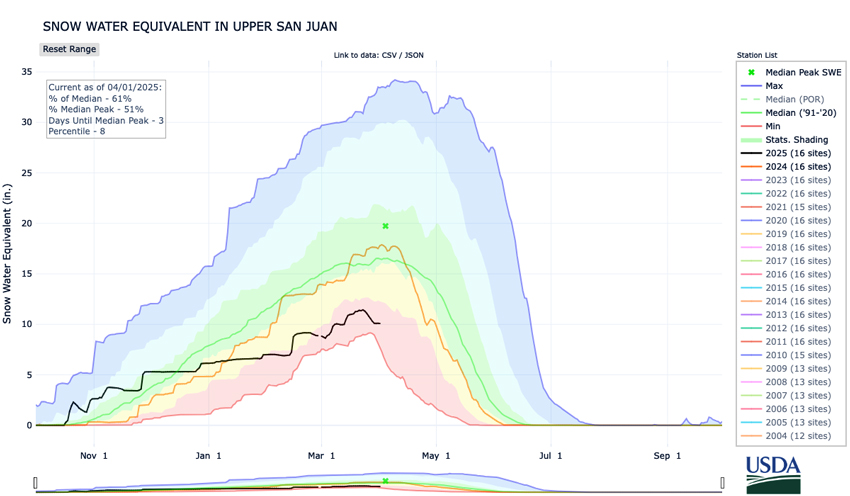
Arizona and New Mexico Snow Conditions
Storms during the first half of March delivered much-needed rain and mountain snow to north central Arizona and far western New Mexico but did not reach most of central and eastern New Mexico.
Water year precipitation remains much below average for all of Arizona. All SNOTEL stations in Arizona had above-normal March precipitation, with several stations receiving more than 200% of normal precipitation. The mountains in central Arizona received 3-6 inches of liquid equivalent precipitation in March. These were cold storms that brought significant snow water equivalent (SWE) increases to the mountains in Arizona. Nevertheless, most locations are still reporting much-below-median SWE and never approached median peak SWE.
Nearly all SNOTEL stations in Arizona and New Mexico report less than 50% of median SWE, and some have already completely melted out. Most of the stations in New Mexico had their first to ninth driest winter on record. In northeastern Arizona, the Little Colorado Basin is at 56% of median SWE and reached just 49% of median peak SWE in mid-March, the Verde Basin is at 49% of median SWE and reached 65% of median peak SWE in mid-March, and the Salt Basin is reporting no snow much earlier that its typical median snowmelt date of April 14.
Conditions in New Mexico are worse than in Arizona. The Upper Rio Grande Basin reports the lowest SWE on record (since 1981) at 32% of median and is currently at 23% of median peak SWE. SWE in the Rio Grande-Elephant Butte Basin is also at the lowest on record, 14% of median, and reached a maximum of just 24% of median peak SWE. This trend of breaking records carries on with the Pecos River Basin, which is at 17% of median, and reached a maximum of 17% of median peak SWE on March 22. The Canadian River Basin also broke records for lowest SWE this year. Currently it stands at 6% of median SWE and never exceeded 36% of median peak SWE.
Oregon and Washington Snow Conditions
Snowpack is generally below median in the northern Cascade Range in Washington, near median in the central Cascade Range in Washington and Oregon, and much above median in the southern Oregon Cascade Range, as well as in Steens Mountain and the Blue Mountain Range in eastern Oregon. Elsewhere in Oregon and Washington, snowpack is generally above median.
The main area of concern for snow drought is in the northern half of the Washington Cascade Range, where snow water equivalent (SWE) is less than 70% of median at many SNOTEL stations. The Puget Sound Basin is currently at 77% of median SWE and 75% of median peak SWE, which occurs on April 14. A late March heat wave led to substantial snowmelt in this basin, with some stations reporting 5-7 inches of SWE loss over five days. Peak SWE in the Washington Cascade Range typically occurs in mid-April, or later at higher elevations. While there is still some time left for snow drought recovery, forecasts suggest a return of below-normal precipitation and above-normal temperatures, making recovery to median peak SWE unlikely.
Rapid snowmelt in southeastern Oregon is contributing to flood conditions in parts of northern Harney County near the town of Burns, prompting the state of Oregon to declare a flood emergency. The nearby Starr Ridge, Lake Creek, and Rock Springs SNOTEL stations lost more than 4 inches of SWE over the last 10 days of March.
In northern Oregon, SWE is below median at a few lower-elevation sites on the west slope of the Cascade Range. For example, Jump Off Joe SNOTEL station (3,530-foot elevation) is currently at 40% of median SWE.
California and Nevada Snow Conditions
In the Trinity Alps, the southern Cascade Range in northern California, and north of Highway 50 in Nevada, snowpack is generally much above median, with the exception of some lower-elevation locations that are nearing their typical snowmelt time.
In the Sierra Nevada, areas north of I-80 have above-median snowpack. Across much of the central and southern Sierra Nevada, snowpack is near to slightly below median. Variability at the station level is high, with some locations (especially at lower elevations on the west slope and in the Tahoe Basin) reporting much-below-median snow water equivalent (SWE) or no snow at all following early melt out.
On the west slope of the Sierra Nevada, from north to south, the Lower Sacramento, San Joaquin, and Tulare-Buena Vista Lakes Basins are at 98%, 89%, and 88% of median SWE, respectively. On the east slope, the Truckee, Carson, and Walker Basins are at 96%, 91%, and 92% of median SWE, respectively. SWE at most Sierra Nevada locations peaks in late March or early April, so current values are likely fairly representative of peak snowpack. As of March 31, a substantial cold storm over the Sierra Nevada is forecast to add 3-4 inches of water to the snowpack and bring basin values closer to median peak SWE.
The three SNOTEL stations in the Spring Mountains in southern Nevada indicate no snowpack remains, and snowmelt here was a few days to more than two weeks early. Snowpack peaked in late March, which was later than usual, but was only 43%-67% of median peak SWE.
Alaska Snow Conditions
Snowpack in southcentral Alaska is much below median at lower elevations, and the few higher-elevation stations are reporting near- to above-median snowpack. Snow water equivalent (SWE) is 70%, 73%, and 79% of median in the Kenai Peninsula, Prince William Sound, and Knik Arm HUC 6 basins, respectively. Little snow remains at the Kenai Moose Pens and Port Graham SNOTEL stations, where the median snowmelt date is at the end of April. Higher elevations in the region, where SWE typically peaks closer to May 1, should still have about a month of snow accumulation season remaining. Little snow remains at low elevations in the Anchorage area, despite above-median snowfall in March. Above 2,000 feet, snowpack is near- to above median.
Snow observations are limited in the Panhandle, but indicate that snowpack is much below median in the region. The Long Lake SNOTEL station near Juneau is currently reporting 55% of median SWE, and the Juneau Airport received about half of the normal seasonal snowfall. At- or near-record warmth during the last week of March reduced what little snowpack was present at higher elevations in the Panhandle.
The U.S. Drought Monitor currently depicts Abnormally Dry (D0) conditions in parts of southwestern, southcentral, and southeastern Alaska, which is partially due to low snowpack in the region..
* Quantifying snow drought values is an ongoing research effort. Here we have used the 20th percentile as a starting point based on partner expertise and research. Get more information on the current definition of snow drought. Note that reporting of SWE by Snow Telemetry (SNOTEL) stations may be unavailable or delayed due to technical, weather or other issues, which may affect snow drought depiction in this update.
For More Information, Please Contact:
Daniel McEvoy
Western Regional Climate Center
Daniel.McEvoy@dri.edu
Jason Gerlich
CIRES/NOAA/NIDIS Pacific Northwest and Missouri River Basin Regional Drought Information Coordinator
Jason.Gerlich@noaa.gov
Amanda Sheffield
CIRES/NOAA/NIDIS California-Nevada Regional Drought Information Coordinator
Amanda.Sheffield@noaa.gov
Gretel Follingstad
CIRES/NOAA/NIDIS Intermountain West Regional Drought Information Coordinator
Gretel.Follingstad@noaa.gov
NIDIS and its partners launched this snow drought effort in 2018 to provide data, maps, and tools for monitoring snow drought and its impacts as well as communicating the status of snow drought across the United States, including Alaska. Thank you to our partners for your continued support of this effort and review of these updates. If you would like to report snow drought impacts, please use the link below. Information collected will be shared with the states affected to help us better understand the short term, long term, and cumulative impacts of snow drought to the citizens and the economy of the regions reliant on snowpack.
Report Your Snow Drought Impacts
Data and Maps | Snow Drought
Research and Learn | Snow Drought


